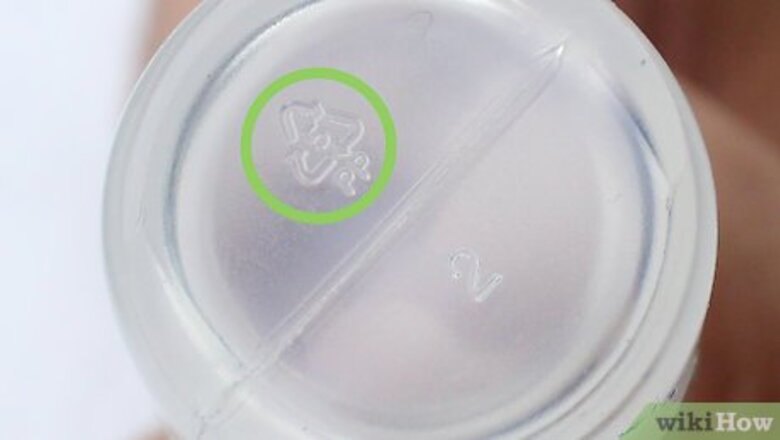
views
Selecting a Glue
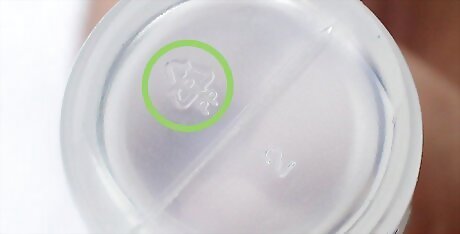
Look for a recycling symbol. Different varieties of plastic require different glues. The easiest way to identify the type is to search for a recycling symbol on the plastic itself, the label, or the packaging the object came in. This symbol is a triangle formed by three arrows, and contains a number, letter or both inside or below the triangle.

Learn how to glue plastics marked 6. A recycling symbol containing a 6 or PS signifies the plastic type "polystyrene". This is best glued with a poly cement (also called plastic cement), or a specialized plastic glue such as Loctite Epoxy Plastic Binder or Super Glue Plastic Fusion. Other adhesives that will work include a cyanoacrylate (also called "instant glue" or "cyano"), or an epoxy.

Select a specialized glue for plastic marked 2, 4, or 5. If your material is labeled 2, 4, 5, HDPE, LDPE, PP, or UMHW, you have a type of "polyethylene" or "polypropylene". These plastics are much more difficult to glue, and you'll need to look for a specific product that names these types on its label, such as Loctite Plastics Bonding System or Scotch Weld DP 8010.
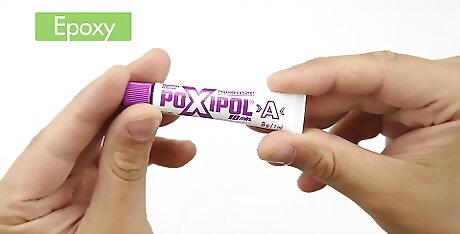
Make the right choice for plastics marked 7 or 9. The miscellany category marked 7 or the ABS type marked 9 can indicate a variety of plastic resins, with many possible letters indicating subtypes. Your best bet for gluing it is an epoxy or cyanoacrylate.
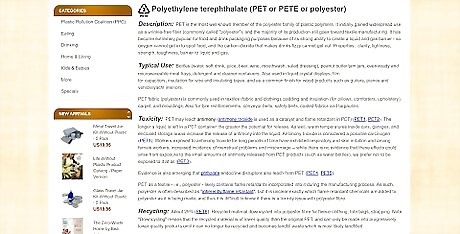
Try to identify the plastic type in other ways. If there is no recyclable system, you may have to guess at which type of plastic it is before you can select a glue. Here's a guide to help you accomplish this task: Lego bricks are made from a type of plastic called "ABS", and are best glued using epoxy cement. ABS solvent cement will also work, but may alter the shape of the material's surface. Imitation glass, cheap toys, CD cases, and similar brittle, often clear plastic is usually "polystyrene" and can be glued using a number of adhesives. For best results, use a poly cement or a glue advertised for plastic bonding. Glue tough, hard plastic found in bottles, buckets, crates, and food containers using a product that specifically advertises the ability to bond "polyethylene" and "polypropylene". These are impossible to glue by most normal methods, so don't assume a product labeled "for plastic" will work unless it specifically mentions "polyethylene" or "polypropylene".
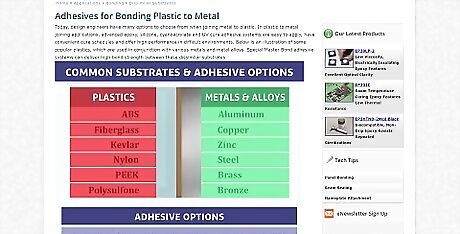
Do further research if gluing plastic to another substance. If you are gluing plastic to wood, metal, glass, or even a different type of plastic, you'll need to commit to further research. If you can't find an answer online or by asking an experienced handyman, go to the hardware store and look at each brand of adhesive you've determined you could use following the above steps. The packaging should tell you what substances it can glue onto plastic. Visit This to That for extensive advice on which glue to use for each combination of materials. This advice will be most helpful for common types of plastic, especially polystyrene. If you are unsure which to use, try testing an adhesive with scrap material of the same types, or in an unobtrusive corner of your object in need of gluing. EXPERT TIP Bicycle Glass Bicycle Glass Glassblowing Experts Bicycle Glass Co. was founded in 2016 by David Royce and Michael Boyd, two professional glass experts. Bicycle Glass is primarily a lighting company, committed to quality, sustainability, and affordability. All Bicycle Glass products are made of high-quality, recycled glass and are hand-blown by a dedicated team of artisans. The studio is committed to reducing its carbon footprint by conserving energy in all of its production. Using renewable wind energy to offset all electricity usage, the studio is actively working toward the goal of carbon neutrality. Bicycle Glass believes that high-quality, handmade glass products should be within reach for everyone. Bicycle Glass Bicycle Glass Glassblowing Experts Choosing the perfect type of glue can make all the difference in your project. It's essential to choose a glue that is appropriate for the materials you want to join together. Moreover, different types of glue have varying strengths, clarity, and drying times, so choose the one that will work best for you. Do you need a strong bond? Or is clarity after drying your top priority?
Gluing the Plastic

Remove grease from the plastic. Wash with soap, use a specialized plastic cleaner, or soak the plastic in isopropyl alcohol to clean. Dry thoroughly. Avoid touching the piece with your bare hands afterward, to minimize oil residue.
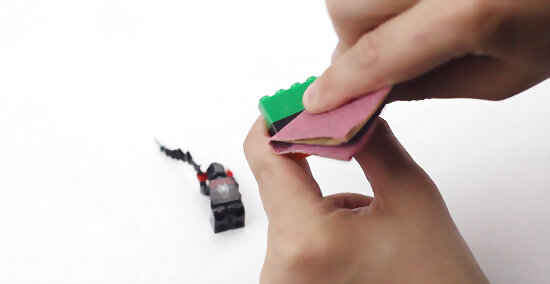
Sand the surface to be glued. Briefly sand the plastic with 120-200 grit sandpaper to create a rough surface for the glue to bond to. Steel wool or emery cloth will also work, but remember it only needs to be rubbed briefly.
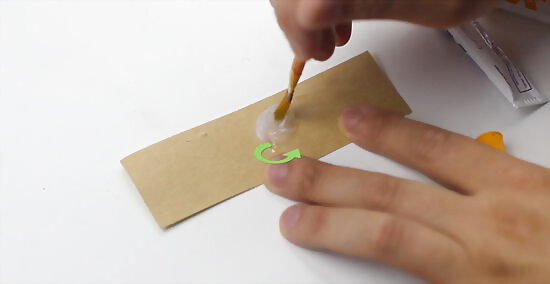
Mix the two glue components together if required. Two-part "epoxies" require two ingredients to be mixed together to activate the adhesive. Read the instructions on the container carefully, as there are many types of epoxy and each requires a certain ratio of the two ingredients. Some of them can be used for several hours after mixing, while others require application within a few minutes. See Selecting a Glue to learn which type of glue to use. You can skip this step if you are not using a two-part adhesive.

Apply glue to both surfaces. Use a small brush to apply an even layer of adhesive to both surfaces where they will be attached. For tiny pieces, such as a broken piece on a plastic model, you can use the tip of a needle instead. If you are using a solvent cement (not a poly cement or plastic cement), you should clamp the pieces together first, then use an applicator bottle to put a thin line of solvent cement along the edge between the pieces, where it will be drawn between them. If you are using it on plastic pipes, see Gluing Plastic Pipes instead.

Press the pieces lightly together. Press them together to get them in place and remove air bubbles. Don't push so hard that the adhesive oozes out of the joint. If it does, wipe away the excess unless you are using an acrylic cement, which should be left to evaporate.
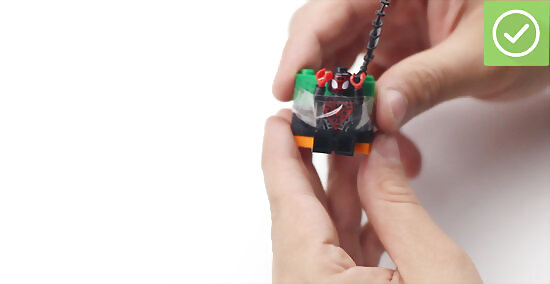
Keep the pieces firmly in place. Use a clamp, vise, masking tape, or rubber bands to hold them firmly together. Read the instructions on your adhesive container to know how long to leave them in place. Depending on the type and brand of adhesive, the bond could take anywhere from a few minutes to 24 hours to develop. Many plastic adhesives continue to "cure", or develop a stronger bond, for days or even weeks after application. Avoid applying stress and heat to the glued piece for at least 24 hours after application, even if the bond seems strong.
Gluing Plastic Pipe
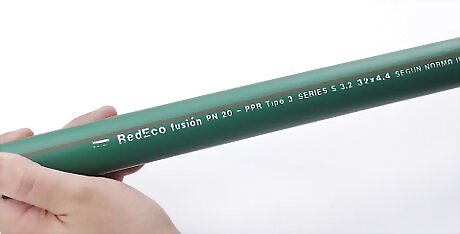
Identify your pipe. There are three types of plastic pipe, and each will only work with certain glues. The easiest way to identify them is to look for the worldwide recycling symbol, a triangle formed from three arrows with a number or letters to identify the type of plastic. Learn how to use this and other identification methods before selecting a glue. PVC pipe is common in residential plumbing, although it should not be used for distribution lines or other high-temperature applications. It is usually white, or grey if used for electrical or industrial purposes. Its recycling symbol is 6 or PVC. CPVC pipe is PVC pipe treated to withstand higher temperatures. It has an identical recycling symbol (6 or PVC) but is usually tan or cream colored. ABS is an older and more flexible type of plastic piping, usually black in color. It is not suitable for drinking water purposes and in some regions may not be legal for any plumbing uses. Its recycling symbol is 9, ABS, or 7 (other). PEX pipe is the newest type of plastic piping, available in many colors. It is not recyclable. It cannot be glued, and must be attached using mechanical fitting tools.
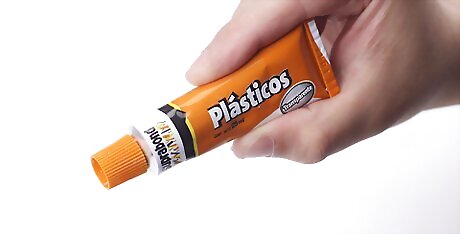
Select an adhesive. The material that bonds plastic piping together is called solvent cement. Find the specific solvent cement you need after you've identified the type of plastic. ABS solvent cement will join two ABS pipes together. PVC solvent cement and CPVC solvent cement similarly join two pipes of that type. Transition solvent cement is used to join an ABS pipe to a PVC pipe. Its distinctive green color makes it easy to identify. If you can't find a more specialized product, universal solvent cement will do an okay job for any combination of PVC, CPVC, and ABS. You should still identify your pipe beforehand to rule out PEX pipe, which must be fitted instead of glued. Read the label of the solvent cement to make sure it will work on the size of pipe you're using. To attach a plastic pipe to a metal one, you may need a specific adhesive for that specific plastic and specific metal combination, or a mechanical fitting method. Contact a plumber or hardware store employee for advice.

Follow safe ventilation practices. Primer and solvent cement release dangerous vapors when used. Either work in an area with excellent ventilation (large open windows, outdoors, etc.) or wear a respirator that blocks organic vapor.
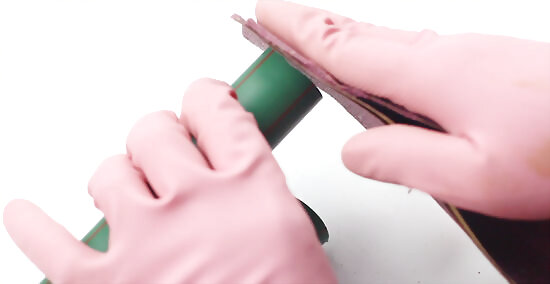
File the inside smooth if the pipe was sawed. Roll 80-grit sandpaper into a tube and sand the inside and outside of the pipe where it will be attached. The goal is to remove uneven pieces and "burrs" created from sawing, which can otherwise catch debris and cause clogs. Flatten the sandpaper roll against the tube to match its shape before rubbing. If you don't have sandpaper, use a file or remove the obvious burrs with a pocketknife.

Mark the alignment of the joints if attaching a curved piece. You won't have much time to arrange the pipes once you've applied the solvent cement, so first fit the pieces together dry. Turn them to the alignment you need and use a permanent marker to draw a line across them.
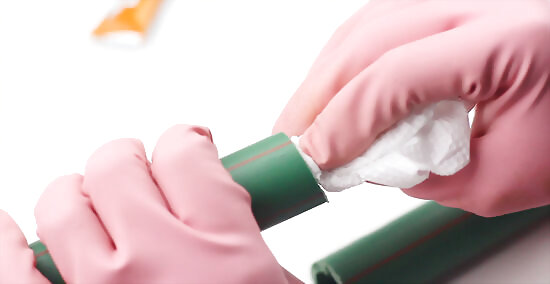
Prime pipe before gluing. Of the three types of plastic pipe, PVC is the only material that requires priming, but CPVC may attach better after priming as well. Wipe PVC primer or CPVC primer as appropriate onto the outside of the pipe segment and the inside of the pipe fitting, where they will be attached. Let dry 10 seconds before continuing.
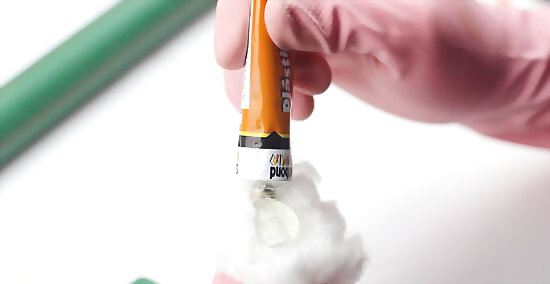
Work quickly and methodically to apply the solvent cement. Wearing gloves, use a brush or cotton ball to wipe an even layer of solvent cement on the outside of the pipe segment and the inside of the pipe fitting. Only apply a thin, even layer to the fitting socket or excess may be pushed into the water piping and create blockage.

Connect the pipes immediately and quarter turn from the desired alignment, then twist and hold. Directly following the application of solvent cement, attach the pipes a quarter turn from the alignment marks you made, then twist them until the marks line up. If you didn't have to make any alignment marks, simply attach and give a quarter turn twist. Hold in place for about fifteen seconds to give the cement time to grab.
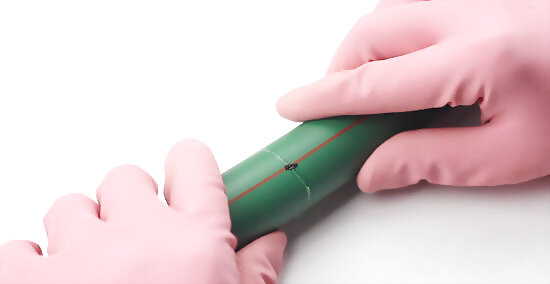
Correct length mistakes by sawing room for a new joint. The attachment may shrink slightly when the solvent cement dries. If your final piece is too short, saw it apart and lengthen it by gluing a new fitting onto it. If it is too long, remove a section of the pipe entirely by sawing and join the two remaining ends together with a new fitting.
















Comments
0 comment